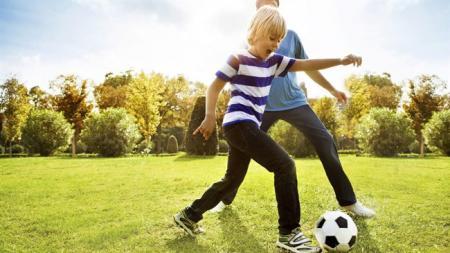
But when does the problem start? It seems the answer is ‘very young’. Last year, a damning international study portrayed British children as among the least active in the world, The Guardian wrote.
Despite government guidelines urging parents to ensure their offspring do at least an hour of moderate-intensity exercise every day, compared with 38 other nations including Venezuela and Slovenia, England and Wales are currently third-worst in the list — with Scotland at the bottom. Only 22 percent of boys aged 11 to 15 manage the recommended amounts of daily exercise, and just 15 percent of girls.
But while active childhoods can have many obvious short-term benefits, including reducing the rates of obesity — the latest figures suggested that nearly 20 percent of 10- to 11-year-olds in England are obese — the little we know of the long-term benefits point towards exercise being even more crucial than we might already assume.
Denmark and Sweden, which have long been interested in the link between childhood physical activity and achievements in later life, have markedly less prevalence of metabolic-related conditions in children. Researchers examined a database containing the fitness records of 1.2 million Swedish men born between 1950 and 1976, on entry into military service at 18. They then traced their subsequent progress through life, and found that cardiovascular fitness appeared to be predictive of cognition in middle age. In other words, the more exercise they had done during adolescence, the more likely they were to be successful professionally.
Neuroscientists believe there are a number of reasons for this. Studies show that doing enough physical activity to improve cardiorespiratory fitness in childhood is directly related to the structure and function of the developing brain, especially regions such as the hippocampus, which is involved in memory, and the prefrontal cortex, which does not complete its formation until your early 20s.
“The developing brain in specific regions appears to be particularly amenable to exercise,” said Charles Hillman, professor of kinesiology and community health at the University of Illinois.
“The development of the prefrontal cortex is involved in our ability to think, reason and commit purposeful action based on thought and not impulse. In everyday life, it is crucial in our ability to lead successful and healthy lives. Exercise increases metabolic demand and, in response, the brain increases angiogenesis — building more capillary beds to transport blood and oxygen to different regions. It also increases the formation of synapses between neurons, increasing the ability of different parts of the brain to talk to each other.”
These benefits can be observed in MRI scans showing the blood flow to various parts of the brain, and the levels of a variety of chemicals involved in the strength and health of neurons. The data available suggested the neuroprotective qualities of exercise are present throughout life, with individuals in their 60s and 70s who exercise having a lower risk factor of developing Alzheimer’s disease. As such, scientists believe that one of the lasting benefits of exercising early in life is actually psychological.
“There’s a strong tendency for childhood exercise to have a positive influence,” said Ted Garland, professor of biology at the University of California.
“Those who have grown up doing regular exercise are more motivated to get out there and exercise as adults. This could be linked to the effect of exercise on the brain’s reward-feedback loops. We know that exercise increases the levels of neurotransmitters such as dopamine and, to an extent, serotonin, and that has a kick-back effect on motivation that persists for quite a lot of time.”
But one of the most fascinating, and newly discovered benefits of childhood exercise is one hidden inside our skeletons. Studies have found that bones retain a ‘memory’ of early-life exercise before the onset of puberty that lasts long after the exercise has ceased, and provides health benefits even in a relatively sedentary adulthood.
“If you look at children who begin intense exercise very early in life — for example children whose parents get them involved in tennis or gymnastics — this induces a pattern of changes in the way their genes express themselves which stays with them for many years,” said Professor Elwyn Firth of the University of Auckland’s department of exercise sciences.
